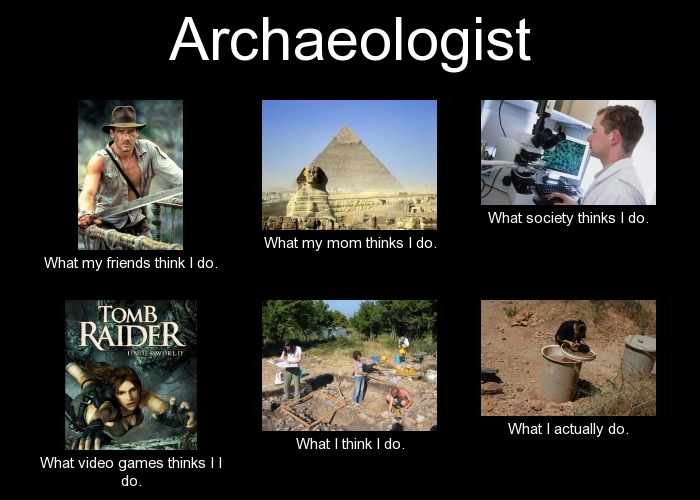On Oct. 17, we celebrate International Archaeology Day. Last year, the Houston Museum of Natural Science participated on a large scale for the first time in a long time. This year, we will have our “Second Annual” version of the same. So what is archaeology and who are these characters that practice the art of archaeology anyway?
Ask anyone and they will answer “Indiana Jones!” when asked to name a famous archaeologist. Hollywood and the media in general tend to gravitate to this entertaining, but totally off the mark, representation of what it is to be an archaeologist.
Archaeologists are people who study the past. They do so with one goal in mind: reconstructing what our ancestors were up to. In the end, while we might find broken pottery, stone tools, or more sophisticated or larger artifacts, what really counts is the answer to questions like these: Who made this? Why? How? How long ago was this?
It takes a special person to be an archaeologist. Patience truly is a virtue. Doggedness comes to mind as well. It won’t hurt to be lucky, but having knowledge will guide you to that breakthrough you’ve been looking for. You’ll need willingness to continue learning, going hand-in-hand with the admission that you really don’t know all that much. All of these are good traits to have.
Luck is part of all this, but the insights archaeologists come up with and share with all of us can be a whole lot more interesting and head-scratching than any Indiana Jones movie. In that regard, archaeologists are like time travelers, our contemporaries who bring ancient cultures back to life, sometimes so much so that you can almost feel it and smell it.
Recently, I’ve been reading up on the presence of early humans in what is now called the Amazon rainforest. My perception of the prehistory of this huge area is changing quickly. Yes, there were early settlers in this part of the world. Paleoindians did reach Brazil, Bolivia, Peru, Ecuador and the Guyanas. Our knowledge of these early immigrants in this part of the world is so small compared to what we know of North American Paleoindians. But… all that is changing, thanks to the determined efforts of a handful of archaeologists, the very same people whose work and insights we celebrate on Oct. 17.
Take Dr. Anna Roosevelt, for example. A professor at the University of Illinois in Chicago and a curator at the Field Museum in the same city, Dr. Roosevelt has been investigating early human presence in the Amazon for decades now. The information she and her team have uncovered now point to an Amazon region that was very different thousands of years ago — well before the arrival of the Europeans. It was so different that these Amazonian Paleoindians would have a hard time recognizing the current landscape, just as much as we have a hard time coming to grips with the existence of large, densely populated settlements in many portions of the Amazon.
To get to this point, Dr. Roosevelt and her colleagues worked for years in the Amazon, in places like Marajó Island as well as rivers further inland. Marajó, an island the size of Switzerland located at the mouth of the Amazon River, yielded evidence of densely-populated settlements, occupied for centuries. This research took years to complete in circumstances where creature comfort was sometimes a distant notion. It took perseverance as well, as the new data and new interpretations ran counter to older, more established explanations of the prehistory of the region. Research in the interior relied on the willingness of non-archaeologists to share news of interesting finds on private properties. Sadly such willingness is not always forthcoming, resulting in the loss of an unknown quantity of materials all over the world.
Building trust among the locals and upholding that reputation is not easy. One has to be determined, focused and dogged in the pursuit of knowledge. Dr. Roosevelt’s team checked off all these boxes, and came up with cool finds, some on land, some underwater.
On International Archaeology Day, we pay homage to the work done by people like Dr. Roosevelt. Local archaeologists, professional and avocational, physical anthropologists, and artists who work on facial reconstructions will all be at HMNS. Museum docents will share their insights and enthusiasm about archaeology with hands-on experiences, pointing to the various halls in the museum where archaeology is covered. These include the John P. McGovern Hall of the Americas, the Hall of Ancient Egypt and the section of human evolution in the Morian Hall of Paleontology. The event starts at 10 a.m. and ends at 4 p.m. Dig it!









